Birth Home of Queen Jeongsun (정순왕후생가)
6.4 Km 26382 2024-02-22
39 Handari-gil, Eumam-myeon, Seosan-si, Chungcheongnam-do
Birth Home of Queen Jeongsun is the house where Queen Jeongsun (1745-1805), the queen consort of King Yeongjo (1694-1776), the 21st monarch of the Joseon dynasty (1392-1897), lived until she became queen in 1759. It is estimated to have been built in the 17th century and features the architectural characteristics of hanok, with its distinctive "ㅁ" shape and tiled roof.
Seosan House of Yu Gibang (서산 유기방가옥)
9.3 Km 30870 2024-03-11
72-10 Imunan-gil, Seosan-si, Chungcheongnam-do
House of Yu Gibang was built in the early 1900s and measures 4,770㎡. As a valuable historical asset, it was designated as a Chungcheongnam-do Folk Culture Heritage on October 31, 2005. The house faces south on a low mountain with a thick pine forest background. A courtyard is at the center of the house, created by the straight line-shaped anchae to the north, the haengnangchae to the west, and a chat room with anchae to the east. Initially, there was a middle gate in front of the anchae, but it was demolished in 1988 and replaced with a pavilion-shaped gate as seen now.
Seosan Palbongsan Mountain (팔봉산(서산))
9.4 Km 48765 2021-04-30
Yanggil-ri, Seosan-si, Chungcheongnam-do
+82-41-662-2004
Palbongsan Mountain stretches out like a folding screen and stands high with great spirit. It is known that the mountain was named Palbong (“eight peaks” in Korean) because of its eight peaks standing in a row. There are actually nine peaks, but the smallest was not included. Legend says the smallest weeps over its exclusion at the end of every December. The third peak is the highest, standing at 362 meters with a beautiful view and crisp air, making it ideal for hiking (3-hour course) and resting at the top. There is another mountain of the same name in Hongcheon, so this mountain is usually referred to as “Seosan Palbongsan.”
Haemi Martyrdom Holy Ground (Yeosutgol) (해미순교성지(여숫골))
9.9 Km 24160 2020-03-06
13, Seongji 1-ro, Seosan-si, Chungcheongnam-do
+82-41-688-3183
Haemi Martyrdom Holy Ground is the site where nearly 1,000 Catholics
in Chungcheongnam-do were buried alive during the time between the Byeongin Persecution in 1866 and 1882. At that time, Catholics were executed outside Haemieupseong Fortress' Seomun Gate (West Gate). As it was difficult to execute them one by one, the martyrs were buried alive in a big hole all at once. When confronted with their deaths, the martyrs prayed while singing 'Yesumaria' (Jesus Maria). Because it also sounds like "Yeosumeori", the place was called 'Yeosutgol' as well.
The 16-meter-high memorial tower was set set up near Haemicheon Stream to pay tribute to the nameless martyrs who were buried alive. Many Catholics visit this location every year to remember and honor the martyrs who sacrificed their lives for their belief.
Seosan Munsusa Temple (문수사(서산))
9.9 Km 20688 2020-01-16
201, Munsugol-gil, Seosan-si, Chungcheongnam-do
+82-41-663-3925
The exact founding date of Munsusa Temple is unknown because there are no official records that have been discovered. The temple is estimated to date back to the Goryeo dynasty due to a prayer found in 1973 at the Gilt-bronze Seated Buddha in the temple’s Geungnaksiljeon Hall dated 1346. Around 600 items were discovered along with the prayer, including unbleached ramie cloth, a short-sleeved gown, rice, and barley. Munsunsa has the tranquil atmosphere of a mountain temple. When spring arrives, cherry blossom flowers and wild flowers bloom across the mountain and the nearby cattle farm call to mind a traditional Korean painting.
Munsusa Temple's Geungnaksiljeon Hall is a beautiful building constructed in the Jusimpo style (the column brackets placed only on top of the columns) combined with Dapo style (the column brackets placed between columns as well as on top of the columns). It is designated as Chungcheongnam-do Tangible Cultural Property No. 13. Inside the gorgeously and majestically carved hall are many relics including Gilt-bronze Seated Buddha, Samsebulsang statues (statues of Buddhas of Three Times (past, present and future)), Nahansang statues (statues of disciples of Buddha), and various portraits of Buddha.
The Gilt-bronze Seated Buddha (x_height: 70cm, length between knees: 50cm) was created in 1346. It is a fine example of late Goryo dynasty style Buddha statue along with Gilt-bronze Seated Bhaisajyaguru Buddha of Janggoksa Temple (Treasure No.337).
Seosan Haemieupseong Festival (서산해미읍성축제)
10.4 Km 21899 2024-06-05
143 Nammun 2-ro, Seosan-si, Chungcheongnam-do
+82-41-660-2697
Seosan Haemieupseong Festival is held every October at Haemieupseong Walled Town, a fortress with over 600 years of history. Various events and programs are offered including an overnight program in front of the fortress. Exciting performances such as a reenactment parade, traditional music performances, and fireworks are also planned.
Haemieupseong Walled Town (서산 해미읍성)
10.5 Km 25132 2021-08-18
143, Nammun 2-ro, Seosan-si, Chungcheongnam-do
+82-41-661-8005
Haemieupseong Walled Town is a representative fortress from the Joseon period. Additional famous walled towns in Korea include Gochangeupseong Walled Town and Naganeupseong Walled Town. Haemieupseong Walled Town was established in 1491 during the 22nd year of King Seongjong. Its perimeter is approximately 1.8 kilometers, the x_height is 5 meters, and total area is 196,381 m², making it a huge fortress. Through restoration and purification projects, its old image has been restored as a historic park and it is famous as a site of Catholic martyrs' in the late Joseon era.
During the persecution of Catholics, many Catholics from Chungcheong-do were forced to come to Haemieupseong Walled Town where the administration office was located. Upon arrival, they were tortured to death. In particular, approximately 1,000 people are recorded as having been executed during the persecution in 1866.
The plaza inside of the fortress has a prison site where Catholics were chained up under the Daewongun government, and a gigantic old tree which was the tree used for torturing. The stones which were used for thrashing are located outside of a fortress gate and have become a holy place.
Seosan Gaesimsa Temple (개심사(서산))
10.9 Km 49163 2021-09-18
321-86, Gaesimsa-ro, Seosan-si, Chungcheongnam-do
+82-41-688-2256
Situated in a dense forest in Sangwangsan Mountain and 6 kilometers away from Haemi-myeon, Gaesimsa Temple is one of the four major temples in Chungcheongnam-do. The path from the parking lot to the temple site is quite remote and curved, but beautiful especially in spring when cherry blossoms are in full bloom.
The temple was built in 1484 during the 15th year of King Seongjong and designated as a Treasure. The architecture of the temple stands out, as the buildings use bent tree trunks for pillars.
Seosan Buseoksa Temple (부석사(서산))
11.1 Km 16153 2021-11-23
243, Buseoksa-gil, Seosan-si, Chungcheongnam-do
+82-41-662-3824
Located on Dobisan Mountain in Seosan, Chungcheongnam-do, Buseoksa Temple was built by the Great Monk Uisang in 677, the 17th year of King Munmu of Silla, and was later rebuilt by Great Monk Muhak during the Joseon dynasty. The temple houses eight seated Buddha statues and attracts many visitors due to its magnificent surrounding scenery.
Rock-carved Buddha Triad in Yonghyeon-ri, Seosan (서산 용현리 마애여래삼존상)
11.4 Km 37513 2020-03-27
65-13, Maaesamjonbul-gil, Seosan-si, Chungcheongnam-do
+82-41-660-2538
Seosan Maaesamjonbul (Rock-Carved Buddha Triad) is carved into a huge rock
cliff at the entrance to Bowonsa Temple at Gayasan Mountain. The Rock-Carved
Buddha was discovered in 1958, and is considered the oldest and one of the most
outstanding Buddha rock carvings in Korea.
Standing Buddha stands in
the center, the cross-legged Buddha is to the right, and Standing Bodhisattva
is on the left. The main Buddha, Yearaeipsang (Standing Buddha) is 2.8m high.
All sculptures carved in the middle of Baekje (6th century) are called
"Baekje's Smile," named for their trademark bright smiles. The appearance
of the smile changes depending on the direction of the sunlight, so these statues
were designated as National Treasure No. 84. The best time to see the smile
is from 9-11 a.m.
The location, an important site along a key transportation
route from China to Baekje, is on the way to Buyeo from the Taean peninsula.
The masterful work represents the active interchange of culture with China during
that time period.
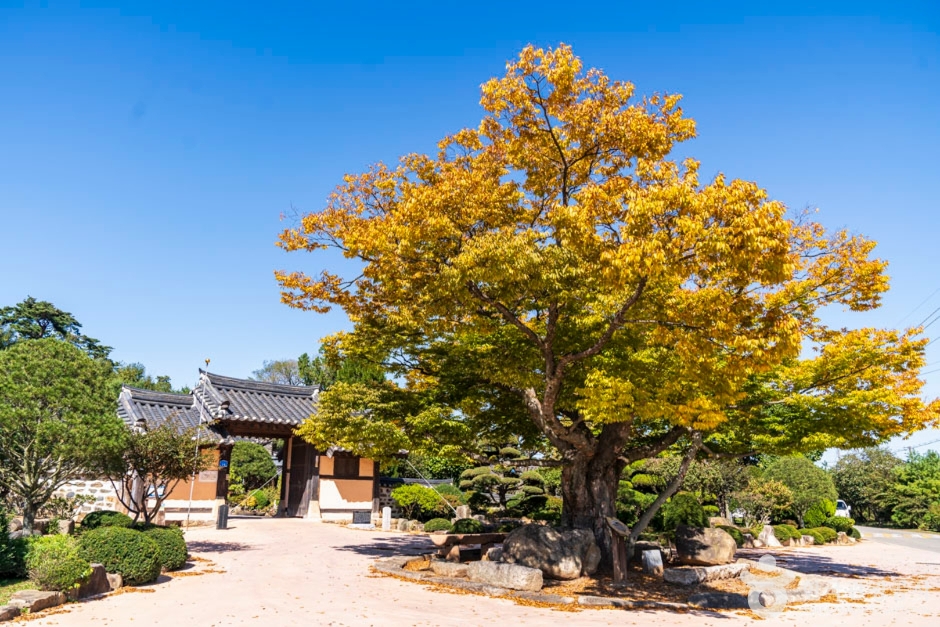
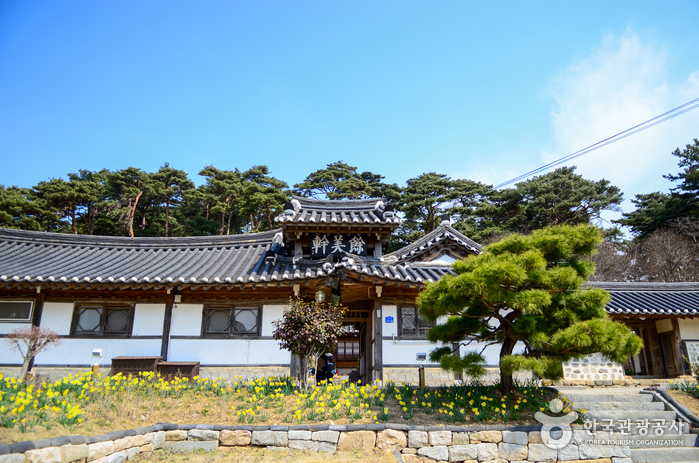
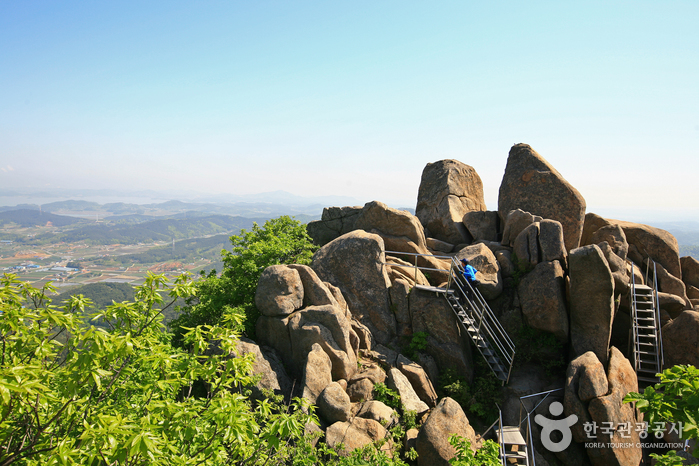

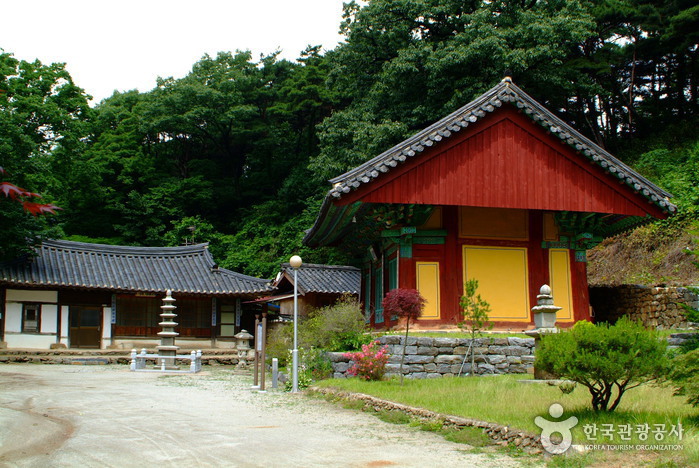
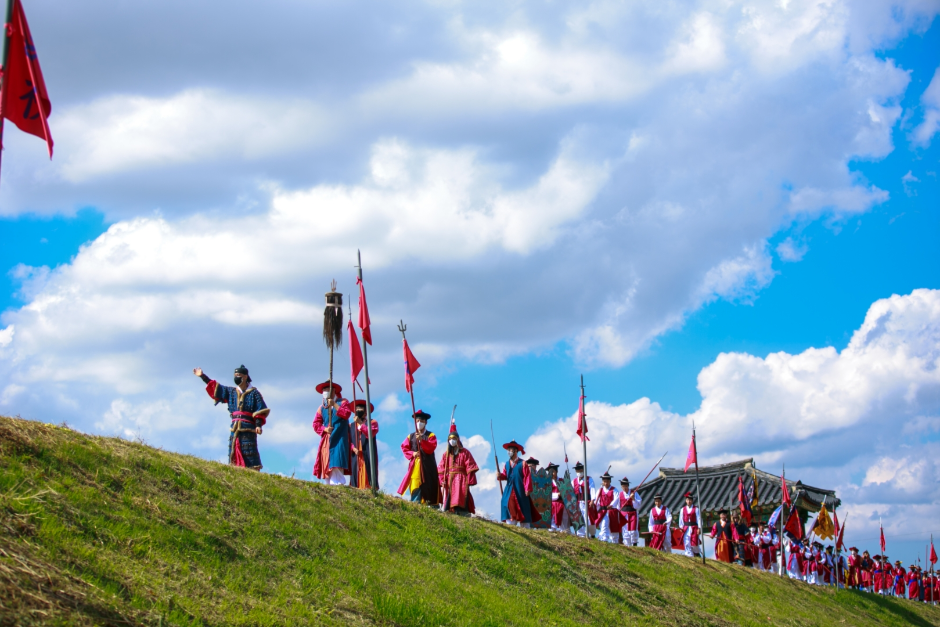
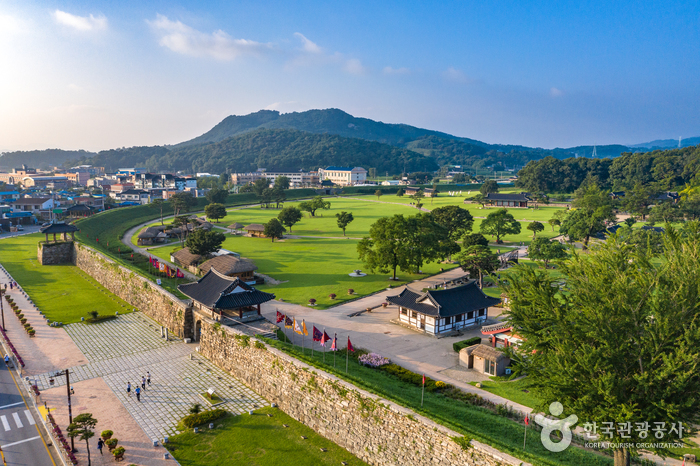
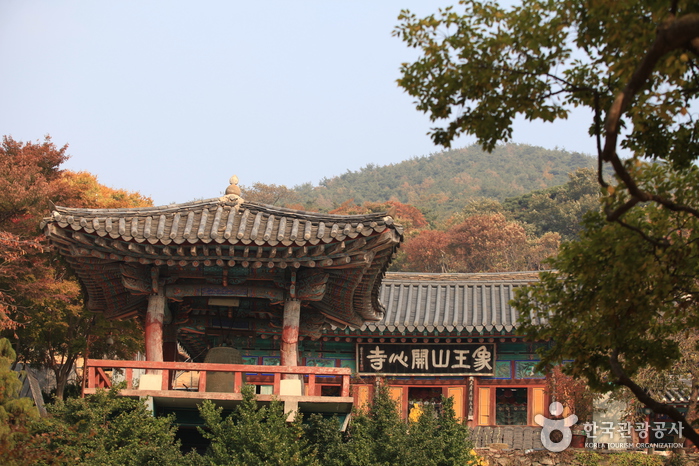
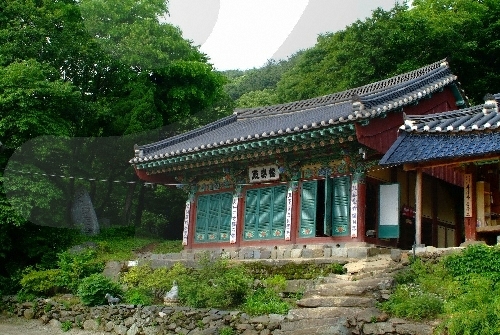
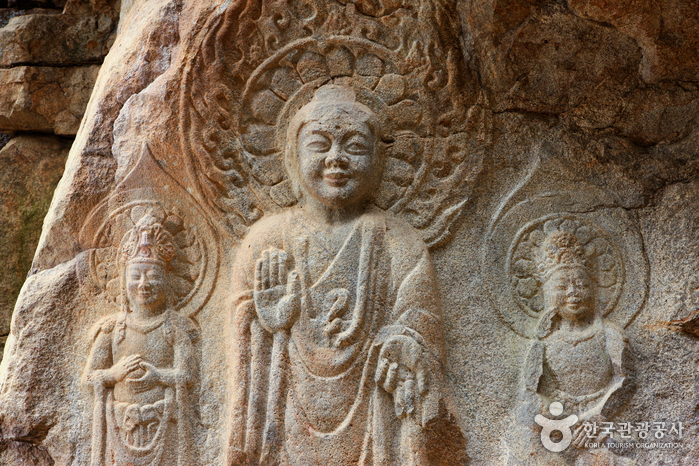
 English
English
 한국어
한국어 日本語
日本語 中文(简体)
中文(简体) Deutsch
Deutsch Français
Français Español
Español Русский
Русский